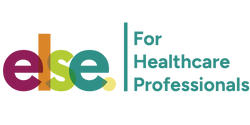Clean Label & Food Contaminants
The Clean Label Project is a nonprofit organization that audits products for over 400 food contaminants and provides a national certification program for those demonstrating safe levels in the category. On the other hand, the term “Clean Label” may sound cliché to some health care practitioners and is not a regulated term. However, this term is used regularly to describe foods or diets based on minimizing food additives and/or minimizing presence of potentially hazardous food contaminants. These topics are of public interest due to the growing body of evidence for potential associated health concerns; therefore, HCPs should be aware of the science behind it. Else Nutrition products are based on minimally processed ingredients and have earned The Clean Label Project’s certification status.
Bair EC.
A Narrative Review of Toxic Heavy Metal Content of Infant and Toddler Foods and Evaluation of United States Policy. Front Nutr. 2022;9:919913. doi: 10.3389/fnut.2022.919913
Patel A, Bridges KM.
Helping parents navigate food trends and labels. Contemp Pediatr. 2023;40(1):38-41
Clean Label Project web site Accessed April 21, 2022
The consumer standard for food and consumer product quality and safety.
Asioli D, Aschemann-Witzel J, Caputo V, et al.
Making sense of the "clean label" trends: A review of consumer food choice behavior and discussion of industry implications. Food Res Int. 2017;99:58-71. doi: 10.1016/j.foodres.2017.07.022
Negowetti N, Ambwani S, Karr S, Rodgers RF, Austin SB.
Digging up the dirt on “clean” dietary labels: Public health considerations and opportunities for increased federal oversight. Int J Eat Disord. 2021;1-10.
Trasande L, Shaffer RM, Sathyanarayana S, et al.
Food additives and child health. Pediatrics. 2018;142(2): e20181410.
U.S. Food & Drug Administration Accessed April 29, 2022.
Guidance for Industry: Action Levels for Poisonous or Deleterious Substances in Human Food and Animal Feed. CFSAN Docket No. FDA-2020-D-1956.

